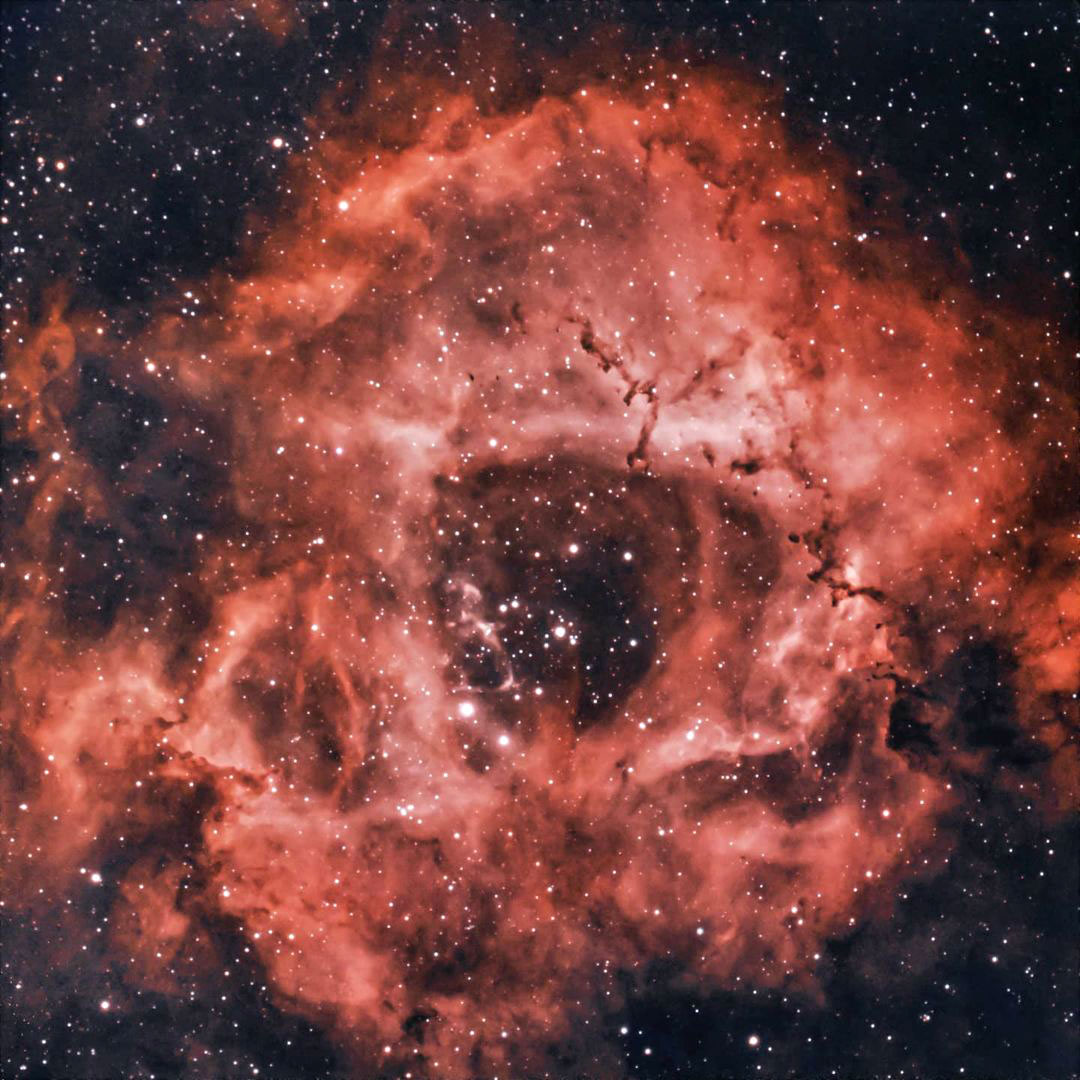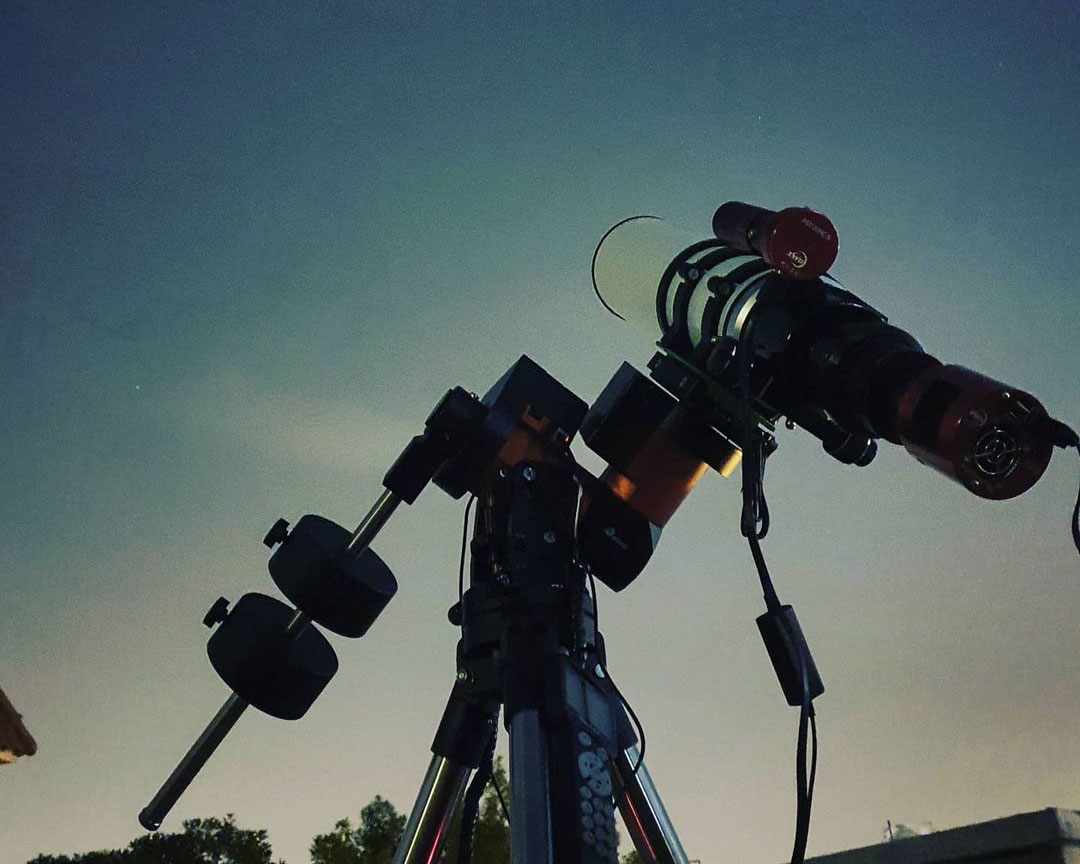
I’ve never really been interested in astrophotography myself since it’s a pretty time-consuming process that requires a lot of patience, but I do find the process interesting. I also assumed we wouldn’t be able to get good photos in Kuwait due to the light pollution but a local photographer is proving that assumption to be false.
Abdulmohsen Alreesh is a local photographer who has been capturing some great photos of our solar system and posting them on his Instagram account @mi7sen89. Not only that but he’s also listing the equipment he’s using as well as the capture details. For example, below is the info he shared related to the photo above:

Rosette Nebula NGC 2244
Description: The beautiful rosette nebula! Named because of the nebulosity that resembles rose petals. I actually see a skull but still a very cool target. The cluster and nebula lie at a distance of 5,000 light-years from Earth and measure roughly 130 light-years in diameter. The radiation from the young stars excites the atoms in the nebula, causing them to emit radiation themselves producing the emission nebula we see.
Equipment:
° Mount: Ioptron Cem40 with iPolar
° Main Imaging: ZWO ASI533MC Pro
° Filter: Optolong L-extreme 1.25″
° OTA: Skywatcher Esprit 100ED
° SW field flattener
° Guide Scope: ZWO mini guide scope 120mm
° Guide Camera: ZWO ASI-120MM-mini
° Stellarmate – Wireless Astrophotography Controller
Integration:
Lights: 30 x 300 seconds – gain 120
Darks: none
Flats: none
Bias: none
Total acquisition: 2 hours 30 minutes
Software:
Deep Sky Stacker
Siril
Adobe Photoshop
Adobe Lightroom
It’s super interesting and he’s got other examples similar to this on his account as well. If you want to get into astrophotography or want to see more photos captured by Abdulmohsen, then make sure you check out his Instagram account @mi7sen89

21 replies on “Astrophotography in Kuwait”
Although not the greatest quality, you’d be surprised how many stars a mobile camera night mode can capture out in the desert.
Latest iPhone and I still can’t shoot the Moon properly, let alone stars 😂
Lol, well, the moon is different because it’s a single object, and you’ll have to use zoom, which turns out very shitty because of the digital zoom, while on the other hand, for stars, you don’t want to look at a single object. The next time you’re in the desert, try night mode, be a still as possible, or even try a mobile tripod. It won’t turn out amazing, but you’ll see many more stars that your eyes can’t.
“I’ve never really been interested in astrophotography…but I do find it interesting” which one is it? 🤣
lol let me adjust that i meant not interesting in taking photos myself
It is such a technical and time-consuming process, only the patient (and well-heeled) can consider it.
Deep Sky Astrophotography is both awesome and rewarding when you have in-depth knowledge of the solar system, the right gears as well the patience. The Rosette Nebula captured is freaking beautiful. Well done Abdulmohsen Alreesh
Stealing more content from reddit.
The guy shared his photo on Reddit which is how I found out about him so can you explain to me how that is stealing? Not only do I credit him but the whole post is about him so how is that stealing? pleassseeee explain to us your thinking process here 🤦🏼♂️
hahahaha!! nice one..
shuush don’t say anything to Mark….
Thanks for the shout out Mark! Long time lurker of your website and just recently opened up my Instagram to a puic profile to share what I have. Glad to see I sparked some interest in the field of astrophotography. I’m always open for an AMA if anyone is interested.
Thanks!
Abdulmohsen Alreesh
I know expensive gear does not necessarily mean better pictures but how much did you spend totally to capture these amazing shots?
The beauty of this hobby is you can find amazing gear for much cheaper than other options. For example my actual scope is a refractor telescope with 3 glass elements which makes it quite pricey but not the most expensive. So it was around 400ish kd. However for that price you can pick up a full set up. The downside is I wanted a refractor as they are a little more portable. If you do plan on getting into this hobby the most important thing is your mount and not the actual telescope. As the saying goes in this hobby buy once cry once as things get expensive fairly quickly. If you can find used that’s also an option and I know Ikarus store in Salmiya has a few used options. I personally ordered online.
oh wow how did I not know Ikarus was located in Salmiya
Thank you for the info. Yeah, I do plan on getting into it in the near future. I tried this myself without a tracking mount in an area with a lot of light pollution and I did not get great results, which was expected. I did capture the Orion nebula at 300mm, 2sec, at maybe 1600 ISO. I couldn’t do expose longer than that due to motion blur and trails, so I guess the first thing I should look into is getting a mount.
Actually you should be good with orion without tracking, the idea is to take a lot of pictures and stack them in a software the one I use is free and called deep sky Stacker. Since it’s such a bright target considering. If you plan to photograph with only a dslr they have smaller mounts relatively cheaper just for that.
Omg yes, I forgot that I could stack images! I’ve been doing it regularly with HDR composites and day time landscape long exposures haha. Thanks, I’ll look into deep sky stacker and try it some day.
I heard the Pixel 5 has astronomical mode that can do this sort of thing well. It takes time, but the results are amazing.
From Mahboula, where would I go to be able to see stars? I am not familiar enough with the roads west of 40 to know which way to go to find darkness.
From mahboula if you go east towards Khairan sea city or Sabah Al Ahmed area it should be better off than towards Kuwait city. The darker the location the better obviously. The instagram account Ikarus posted a stargazing party for this weekend I doubt I will be able to make it but it seems like a good opportunity.